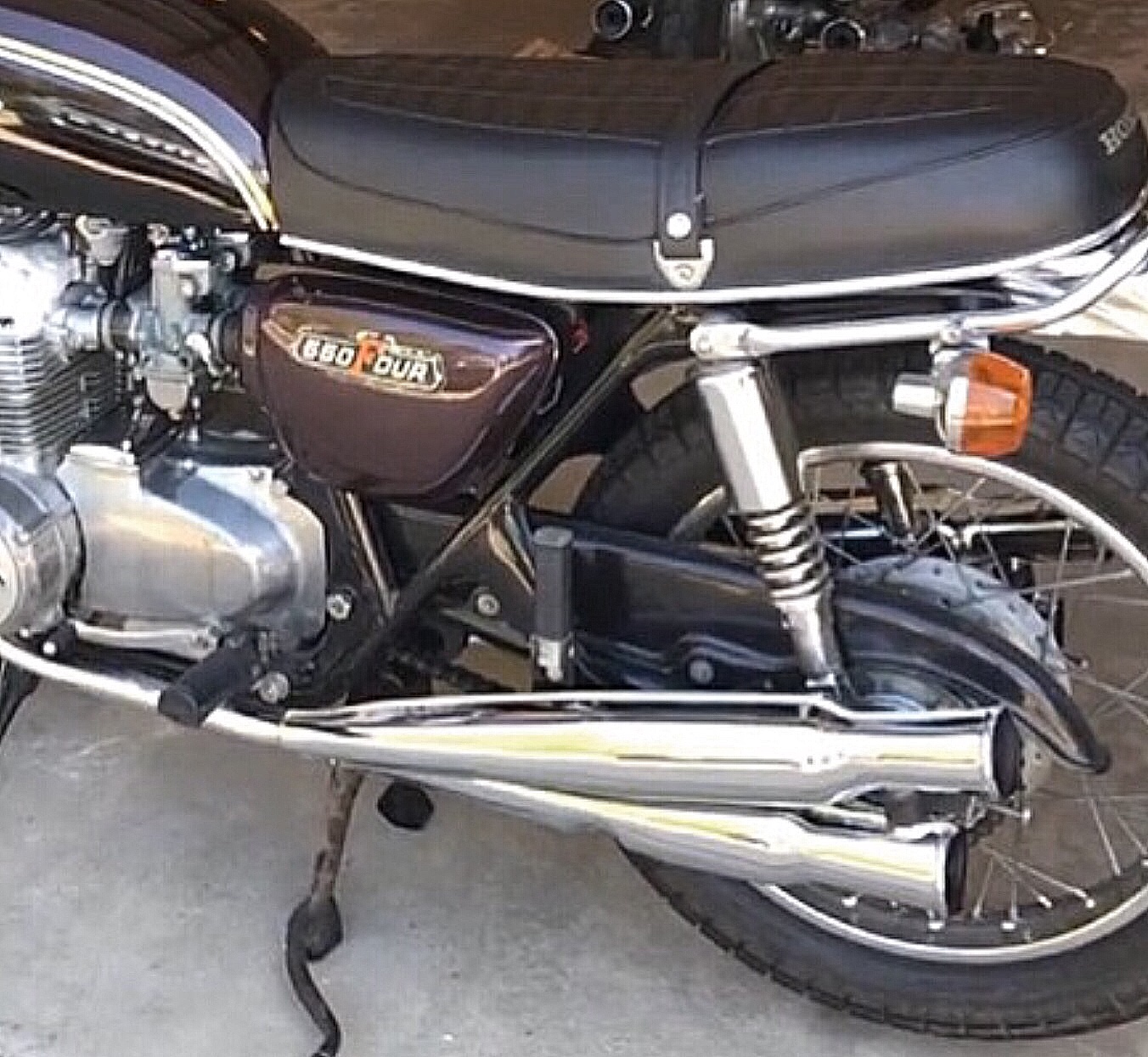  ® ®
|
Living with the stock exhaust |
|
Here is what I mean. Unlike most aftermarket exhausts, the stock 1970s factory Honda exhaust system is made to a design that shuns fiberglass and perforated sound quieting materials. Honda did not do absorption systems back then. Instead, their exhaust baffling system is a type called "gradual expansion", that employs staggered walls throughout the muffler that manipulate the pressure, gradually dissipating it, and the noise.
Unfortunately, as an outcome, the exhaust is very steel-intensive, thus heavy and dense. This is bad because it takes a while for the exhaust to get to operating temperature, at which point it is able to fight off the inevitable corrosion. Corrosion from where? From the engine, which produces water as a part of combustion, and also acids and chemicals, making the water highly corrosive. As long as the muffler gets hot enough--too hot to touch--these acids are mitigated, neutralized. But if not, then not.
It should be obvious then that short rides are death to your exhaust system, and even worse is starting your bike in the garage for practically any reason. Each time your engine is started, the exhaust system absolutely must be got hot enough to purge itself of corrosives. Otherwise, say goodbye to that beautiful exhaust. (Note that one of the benefits of aftermarket exhausts is that they are much less heavy and much less dense and thus heat up quicker, with the result that they fight off corrosion more efficiently.) Of course, like everything else, forums don't talk about this.
|
© 1996-2021 Mike Nixon
 For many of us, the stock exhaust is preferable over any other option. It looks right and it sounds right. In fact, I feel it is responsible for at least half the value of the bike. But, living with the original exhaust does require you to be proactive.
For many of us, the stock exhaust is preferable over any other option. It looks right and it sounds right. In fact, I feel it is responsible for at least half the value of the bike. But, living with the original exhaust does require you to be proactive.